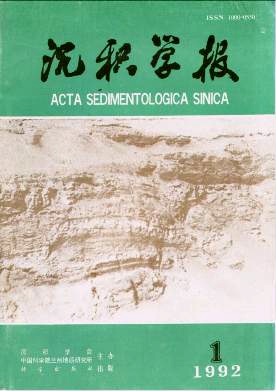Lithofacies Association Types or Sequences and Depositional System of Permian Sandstones in North China
- Received Date: 1990-04-12
- Publish Date: 1992-03-10
Abstract: North China represents a vast area bounded on the north by Yinshan Oldland, on the south by Qingl-ing-Dabie Mountain, on the east by Tanlu fault and on the west by Luliang Moutain. This paper deals with 33 outcrop sections and drill sections in North China in detail. Depending on lithology, grain size, sedimentary structures, colors and thickness of sandbeds, the Permian (Shanxi Formation, Upper and Lower Shihezi Formations) clastic rocks were defined as 13 microfacies- lithofacies. Their mutual assemlages in vertical make up different types of lithofacies associations or sequences, each corresponding to a certain sedimentary process and environment. Therefore, ten types of lithlfaeies associations, with eight being fluvial environments were recognized and modelled. The Permian and Carboniferous in study area are the contineousi deposit. Paleogeographically, the Permian, though still bearing some Carboniferous features, assumed a quite different look, with south-ward retreating sea and more continental facies. The main depositional systems active in Permian are as follows: 1) alluvial plain system, 2) deltaic distributary plain system, and 3) tidal flat-sea inlet system. The provenance are dominated by Yinshan Oldland and Qingling-Dabie Mountain also has a little supply of elastics. Consequently, the Permain in North China is a regression cycle with fluvial deposits predominating The grain sizes become finner and finner from north with the increasing caol beds. The Permain paleoclimate from early to late shows a gradual change from warm moisture to aridness. The coal-bearing gas of commercial values and some oil have been found in Permian of North China. The first to sixth types of lithofacies associations are the favourable foiTnations for development of reservoir rocks. In view of this, the northern parts are more favourable zones for oil and gas exploration than the southern parts in North China. The paper uses lithofacies and its associations in Permain of North China to deal with the featuer, style and distribution in space and time of the various types of fluvial deposits. The classification of fluvial shapes does not probably reflect the whole process of fluvial deposits. The study in lithofacies associations types and the sequences textures is a better method to reflect fluvial enviornments for its geomophic feature and hydroclynamic conditions changes which formed a series of liffe ect fmval enviornments.
| Citation: | Yu Xinghe, Wang Defa, Zheng Junmao. Lithofacies Association Types or Sequences and Depositional System of Permian Sandstones in North China[J]. Acta Sedimentologica Sinica, 1992, 10(1): 27-35. |






 DownLoad:
DownLoad: